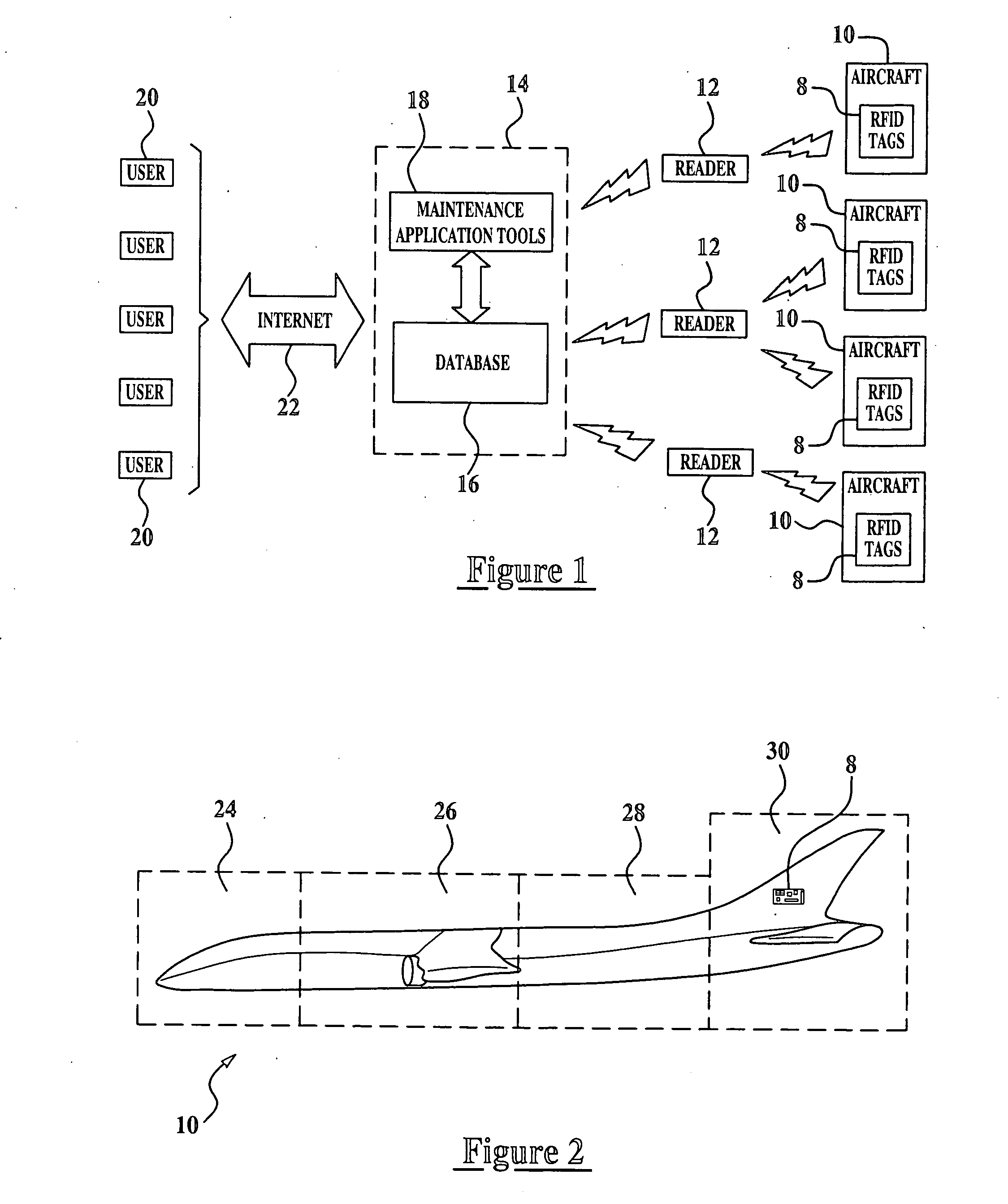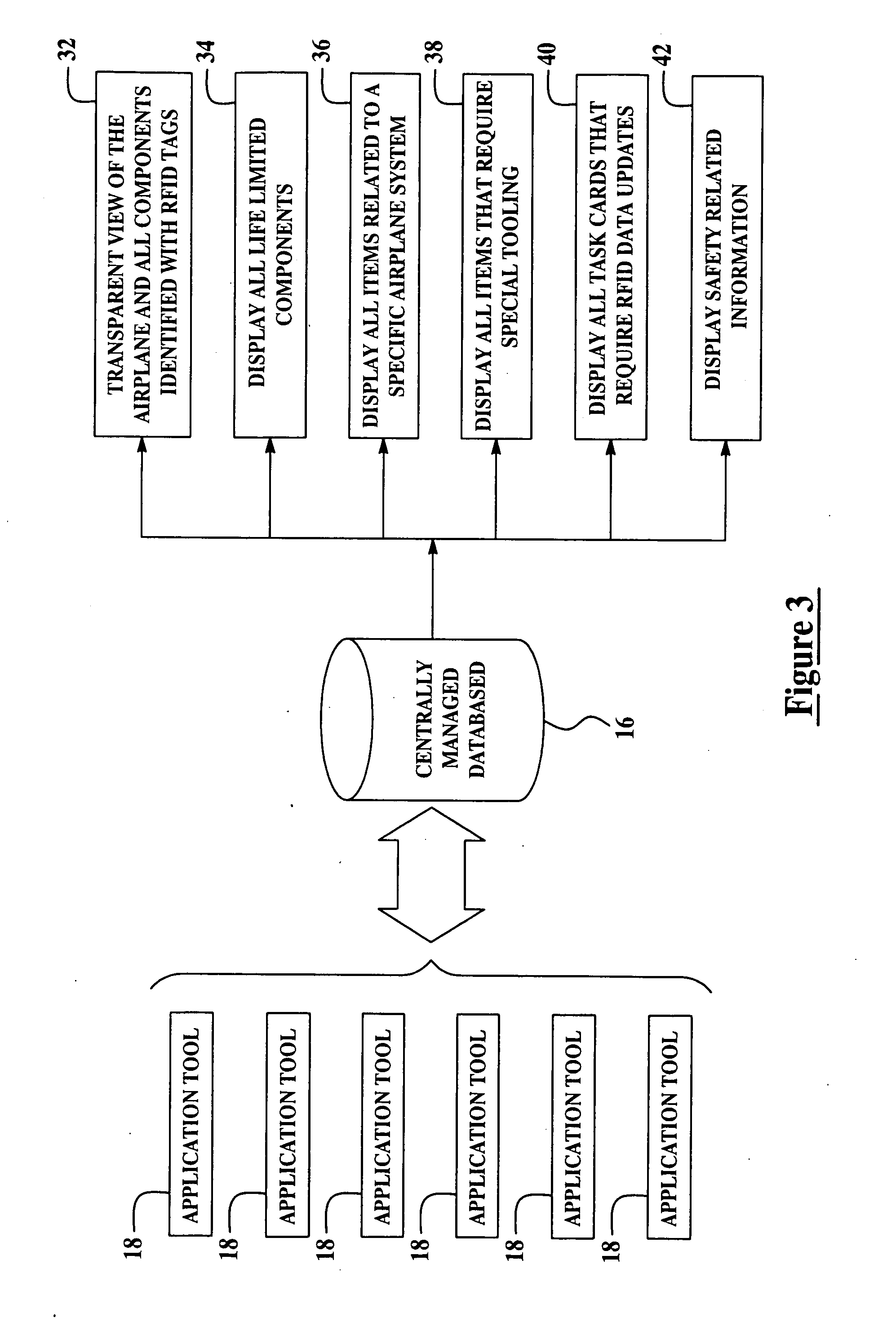RFID data management system
a data management system and data management technology, applied in the field of maintenance of aircraft, can solve the problems of time-consuming and difficult process of reading labels or part numbers, maintenance technicians often use awkward tools, flashlights and mirrors
- Summary
- Abstract
- Description
- Claims
- Application Information
AI Technical Summary
Benefits of technology
Problems solved by technology
Method used
Image
Examples
Embodiment Construction
[0018] Referring first to FIG. 1, the present invention broadly relates to a system for managing data that is stored and retrieved from later discussed RFID tags 8 onboard aircraft 10. These RFID tags 8 are associated with individual components or subsystems carried on aircraft 10 and are employed to store information and data related to the associated component, including its attributes and service or maintenance history. The RFID tags 8 may be attached directly to the associated component or physically placed in proximity to the component on the aircraft. The types of information stored on the RFID tags 8 will be discussed later in more detail.
[0019] The RFID tags 8 located on the aircraft 10 are of the passive type, but may instead be active where approved by airline regulation authorities. Active RFID tags are typically powered by an internal battery and include both read and write modes, i.e., tag data can be re-written and / or modified. Passive RFID tags operate without an int...
PUM
 Login to View More
Login to View More Abstract
Description
Claims
Application Information
 Login to View More
Login to View More - R&D
- Intellectual Property
- Life Sciences
- Materials
- Tech Scout
- Unparalleled Data Quality
- Higher Quality Content
- 60% Fewer Hallucinations
Browse by: Latest US Patents, China's latest patents, Technical Efficacy Thesaurus, Application Domain, Technology Topic, Popular Technical Reports.
© 2025 PatSnap. All rights reserved.Legal|Privacy policy|Modern Slavery Act Transparency Statement|Sitemap|About US| Contact US: help@patsnap.com



